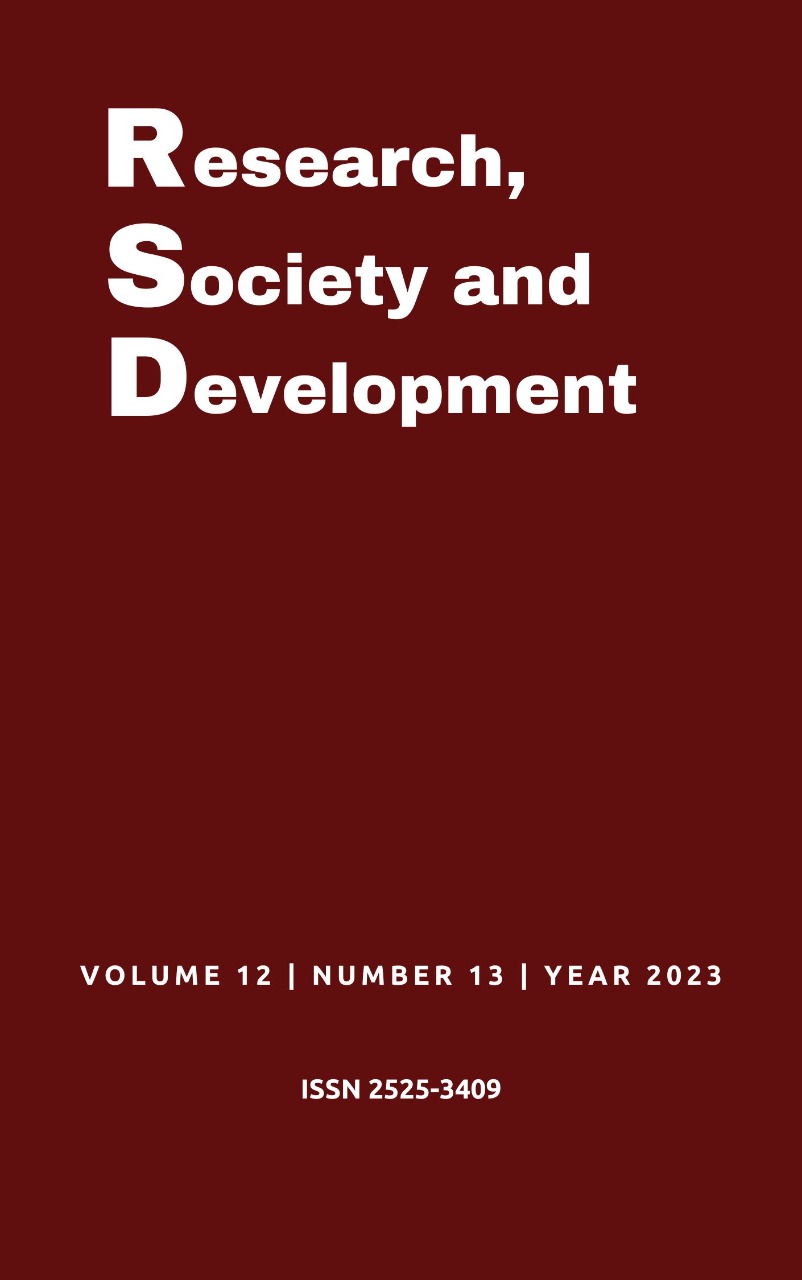Avaliação do tempo de efervescência de comprimidos de vitamina C em amostras de água com diferentes durezas
DOI:
https://doi.org/10.33448/rsd-v12i13.44166Palavras-chave:
Dureza da água, Comprimidos efervescentes, Ácido ascórbico (vitamina C), Tempo de efervescência.Resumo
Este estudo teve como objetivo investigar o tempo de efervescência do comprimido de vitamina C (ácido ascórbico) em águas de diferentes durezas. Foram avaliadas três marcas com concentração de 1 grama de vitamina C em duas amostras de água de dureza de 71,4 ppm (moderadamente dura) e 232 ppm (muito dura). Duas hipóteses foram levantadas sobre os possíveis impactos que a dureza da água teria na efervescência dos comprimidos: a primeira relacionava o pH da água dura e sua influência na tensão superficial da água, e a segunda relacionava a possibilidade da reação dos íons presentes na água com as substâncias constituintes do comprimido. O método empregado para a determinação da dureza total foi o teste MQuant®, e as duas amostras de água apresentaram dureza de 71,4 e 232 ppm. Em seguida, os tempos de desintegração dos comprimidos foram obtidos e comparados através do método de Tukey. Não houve diferenças significativas entre as amostras analisadas. Este trabalho reforça que são necessárias pesquisas adicionais sobre a relação da dureza da água com a efervescência de comprimidos de vitamina C, o que ajuda a compreender como a relação da qualidade da água pode afetar a utilização de medicamentos efervescentes.
Referências
Brasil, Ministério da Saúde. (2010). Resolução da Diretoria Colegiada – RDC n° 17, de 16 de abril de 2010, dispõe sobre Boas Práticas de Fabricação de Medicamentos. Agência Nacional de Vigilância Sanitária (Anvisa).
Brasil, Ministério da Saúde. (2010). Farmacopeia brasileira. (5a ed.).
Cazzaro, F. (1999). Um experimento envolvendo estequiometria. Química nova na escola, 10, 53–54.
Centro Nacional de Informação sobre Biotecnologia (2023). Resumo do composto PubChem para CID 311, ácido cítrico.
Darner, M. A., & Nuria, A. H. (1999). Caracterización y distribución por cantones de la dureza del água en las fuentes utilizadas para consumo humano en Costa Rica. Rev. Costarric. Salud Pública, 8(15), 01–15.
Franco, L., & Bilotta, P. (2014). Implantação de um laboratório de análise da qualidade da água e efluentes de uma indústria farmacêutica. Gestão Industrial, 10(2), 393–405. https://doi.org/10.3895/gi.v10i2.1650
Fonseca, J. J. S. (2002). Metodologia da pesquisa científica. Universidade Estadual do Ceará.
Gerhardt, T. E., & Silveira, D. T. (2009). Métodos de pesquisa. Universidade Federal do Rio Grande do Sul.
Hodgson, S. N. B., Shen, X., & Sale, F. R. (2000). Preparation of alkaline earth carbonates and oxides by the EDTA-gel process. Journal of Materials Science 35, 5275–5282. https://doi.org/10.1023/A:1004826324526
Kim, H.-Y. (2014). Analysis of variance (ANOVA) comparing means of more than two groups. Restorative Dentistry & Endodontics, 39(1), 74. https://doi.org/10.5395/rde.2014.39.1.74
Matos, M. A. C. (2018). Introdução à Análise Química. Universidade Federal de Juiz de Fora.
MQuant® Total Hardness Test 1.08039. (2021). [Instrução de uso MQuant®]. Merck KGaA. Alemanha, Darmstadt.
Oliveira, A. F. G. (2008). Testes estatísticos para comparação de médias. Revista Eletrônica Nutritime, 5(6), 777–788.
Piratoba, A. R. A., Ribeiro, H. M. C., Morales, G. P., & Gonçalves, W. (2014). Caracterização de parâmetros de qualidade da água na área portuária de Barcarena, PA, Brasil. Revista Ambiente e Água, 12(3), 445–458. https://doi.org/10.4136/ambi-agua.1910
Queiroz, E. T. (2004). Diagnóstico das águas minerais e potáveis de mesa do brasil. Águas Subterrâneas.
Silva, P. H. P., Oliveira, A., Medeiros, L. S., & Neves, E. F. A. (2007). Emprego do sal di-sódico de edta como padrão no preparo de soluções. Quim. Nova, 30(3), 574–576. https://doi.org/10.1590/S0100-40422007000300013
Silva, P. H. P., Oliveira, A., Neves, E. A., & Faria, R. C. (2008). Titulações potenciométricas de cátions metálicos tendo como eletrodo indicador o sistema Cu/Cu(II)-EDTA. Quim. Nova, 31(2), 227–231. https://doi.org/10.1590/S0100-40422008000200007
Sengupta, P. (2013). Potential health impacts of hard water. Int J Prev Med. 4(8): 866-75.
-83-0|Tartaric acid. (2023). |Wikipedia.org|uvic acid|racemic acid|threaric acid|paratar. http://en.chembase.cn/substance-175534.html
Usberco, J. & Salvador, E. (2002). Química. (5a ed.), Saraiva.
Yappert, M. C., & DuPré, D. B. (1997). Complexometric Titrations: Competition of Complexing Agents in the Determination of Water Hardness with EDTA. Journal of Chemical Education, 74(12), 1422-1423. https://doi.org/10.1021/ed074p1422
Downloads
Publicado
Edição
Seção
Licença
Copyright (c) 2023 Fernanda Michele Oliveira da Costa; Fernanda Santos da Fonseca; Paulo Mateus Rodrigues Freitas; Yasmin Bitelli Lobão; Leandro Giorgetti; Luis Felipe Gomes Michelin

Este trabalho está licenciado sob uma licença Creative Commons Attribution 4.0 International License.
Autores que publicam nesta revista concordam com os seguintes termos:
1) Autores mantém os direitos autorais e concedem à revista o direito de primeira publicação, com o trabalho simultaneamente licenciado sob a Licença Creative Commons Attribution que permite o compartilhamento do trabalho com reconhecimento da autoria e publicação inicial nesta revista.
2) Autores têm autorização para assumir contratos adicionais separadamente, para distribuição não-exclusiva da versão do trabalho publicada nesta revista (ex.: publicar em repositório institucional ou como capítulo de livro), com reconhecimento de autoria e publicação inicial nesta revista.
3) Autores têm permissão e são estimulados a publicar e distribuir seu trabalho online (ex.: em repositórios institucionais ou na sua página pessoal) a qualquer ponto antes ou durante o processo editorial, já que isso pode gerar alterações produtivas, bem como aumentar o impacto e a citação do trabalho publicado.


